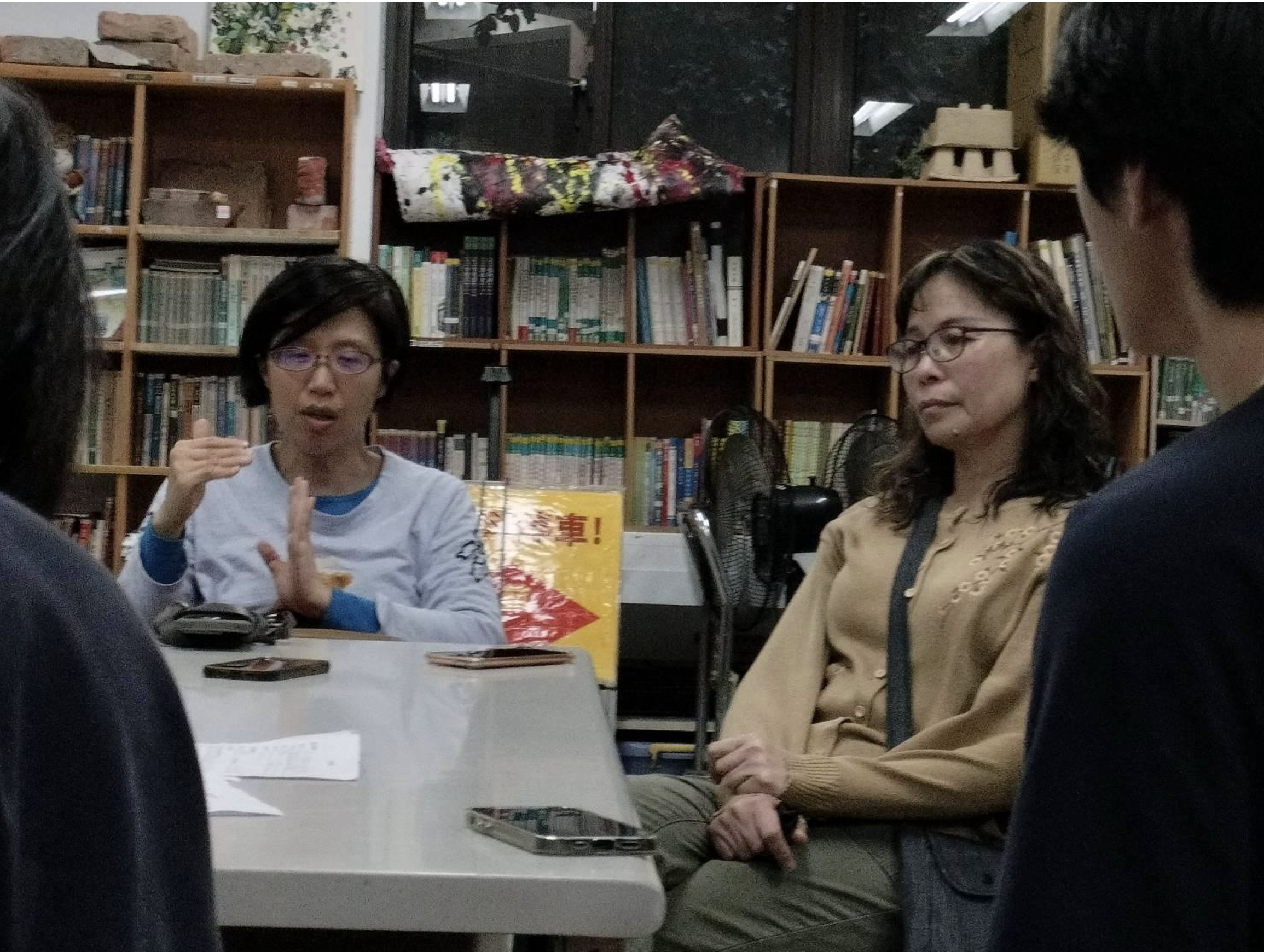This is a series of report about local sustainable actions in Xinzhuang, written by students form Shin Chuang High School. Under the guidance of their teacher – Mr. Tino Huang, students observe sustainable actions from local community, and develops their own news report to record those discoveries in English.
Xinzhuang Storytelling Group (新莊遊藝隊) is dedicated to promoting the culture of Xingzhuang (新莊), and making sure that nearly forgotten cultural sites like old streets are seen and recognized by people. Through irregularly scheduled guided walking tours, they lead interested residents to learn about local culture. For example, the current Xinzhuang Historic Street (新莊老街) is often regarded merely as a night market, and its cultural significance is gradually being forgotten. Not only Xinzhuang Historic Street, but many historical buildings and cultural sites in Xingzhuang have been altered due to urban renewal. As a result, Ms. Yang, the founder of Xinzhuang Storytelling Group, decided to gather like-minded individuals to spread the stories of Xingzhuang and speak out for its culture. Their goal is to promote and preserve the stories of Xingzhuang so more people can understand, identify with, and care about the local heritage. This kind of work supports sustainable development, as cultural inheritance is a crucial aspect of sustainability. We interviewed them to understand their activities, founding process, and challenges.
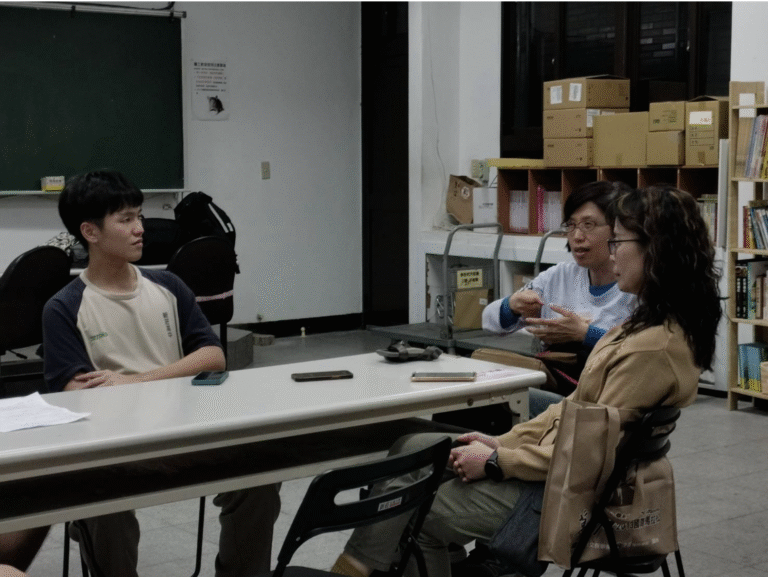
Volunteer Structure
In a conversation about local cultural tours, they shared insights about their work and observations. Their guided tour team operates entirely on a voluntary basis. However, some guiding organizations are affiliated with government agencies, such as the volunteer group under Wugu Shourang House (五股守讓堂), which is now a library managed by New Taipei City. Likewise, Lin Family Mansion and Garden (林家花園) offers regular tours managed by the New Taipei City Government’s Cultural Affairs Department. In comparison, Xinzhuang Storytelling Group’s operations are quite unique. Regarding tour leadership, some believe government units have more advantages due to ample funding, while others see pros and cons. Their own team operates without any budget. Occasionally, they accept tour requests from private groups, schools, or associations and collect a guiding fee, which is donated to support the team. Their current operation doesn’t require much funding, but organizing larger events presents financial challenges. Every other year, they recruit new trainees and hope more people will join in promoting local culture.
When discussing cultural identity and development, some worry that Xingzhuang is becoming too homogeneous. The rise of new residential complexes has caused the city to appear empty during work hours and congested during rush hours. Some residents even complain about the “Wu-Yi Grand Pilgrimage” – Xinzhuang’s Annual Ritual of the Martial and Civil Deities (五一大拜拜)- event and have proposed petitioning the government to cancel it. They clarified that this event is not hosted by public temples or the government but is a folk parade organized by a Temple Ritual Society “宣社” called “Junxian Hall” (俊賢堂.) Unfortunately, many citizens are unaware of this. On cultural inheritance and innovation, they emphasized that culture survives if people are willing to participate. With continuous involvement, traditions like those of Junxian Hall can be passed down through enthusiasm and action.
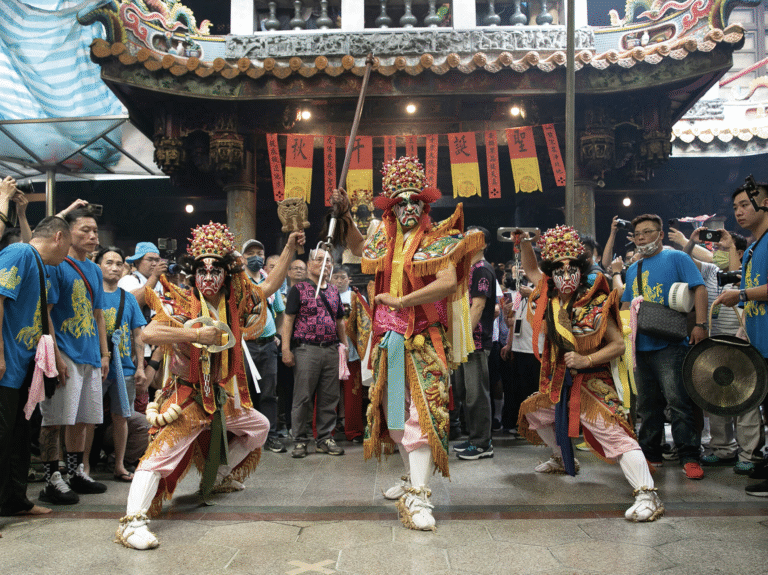
Activities and Features of the Team
Xinzhuang Storytelling Group organizes at least one storytelling tour per month, guiding participants through various sites in Xingzhuang while introducing them to local history and customs. They do not limit themselves to historic buildings and temples; in recent years, they’ve also covered areas near new developments like sub-center. Their tours help participants use their eyes, ears, feet, and hearts to appreciate Xingzhuang’s beauty, fostering emotional connections to the place.
Members of the group recall their most memorable experience being their first time leading a tour, when they had to concisely and engagingly share a site’s story in just a few minutes. It was a challenge that became enjoyable with practice, and helped them grow in public speaking while spreading Xingzhuang’s culture.
In addition to monthly tours, they collaborate with community colleges to host large events such as the decade-old “Hai-Shan Village Tour Day”. On that day, in addition to guided tours, children can participate in a “Find the Tiger God” game or create street art with chalk. In recent years, they’ve also integrated modern technology, like robot-based AR puzzles combined with local stories, to increase appeal.
Activities often introduce local traditions such as the thrilling Lantern Festival event “Hong Pao Tai” (轟砲台), where participants aged 18+ ignite firecrackers into an oil barrel. Prizes range from various gifts to electronics. Another key tradition is “Wu-Yi Grand Pilgrimage”, which allows people to experience temple culture firsthand. They hope such experiences can reshape young people’s negative perceptions, who often associate the event with unruly youth.
Aside from traditional culture, modern landscapes like sub-center are also covered. Despite being newly developed, participants are equally intrigued by the stories behind these modern spaces, which enhances familiarity.
Tour participants come from a wide range of age groups, including families and retirees. Since most events are free, the Storytelling Group constantly explores innovative ways to attract different audiences. At the end of each tour, they share local pastry “Salted Blessing Cake” (鹹光餅) to conclude with a memorable taste of Xingzhuang, encouraging love for the town.
Operations
Xinzhuang Storytelling Group is mainly composed of volunteers. Their operations are flexible and spontaneous. Activities are often initiated through outside inquiries. Since members have full-time jobs, they don’t have a fixed meeting space and usually borrow community college classrooms for discussions. Despite this, participation has steadily grown, with many return attendees who found the diverse and fun tour routes engaging enough to help promote them.
Their storytelling-based tours may not be flashy, but they resonate deeply with people. They’ve tried collaborating with the Cultural Affairs Bureau and other government bodies, but the results vary. Some organizers carefully design engaging events, while others rely on flashy gimmicks that dilute quality. Ultimately, Xinzhuang Storytelling Group believes storytelling is the most effective long-term method for preserving local culture.
On social media, they discovered their audience prefers textual content. Although they’ve considered using platforms like Instagram, they primarily focus on text and images, with photos mainly used as records.
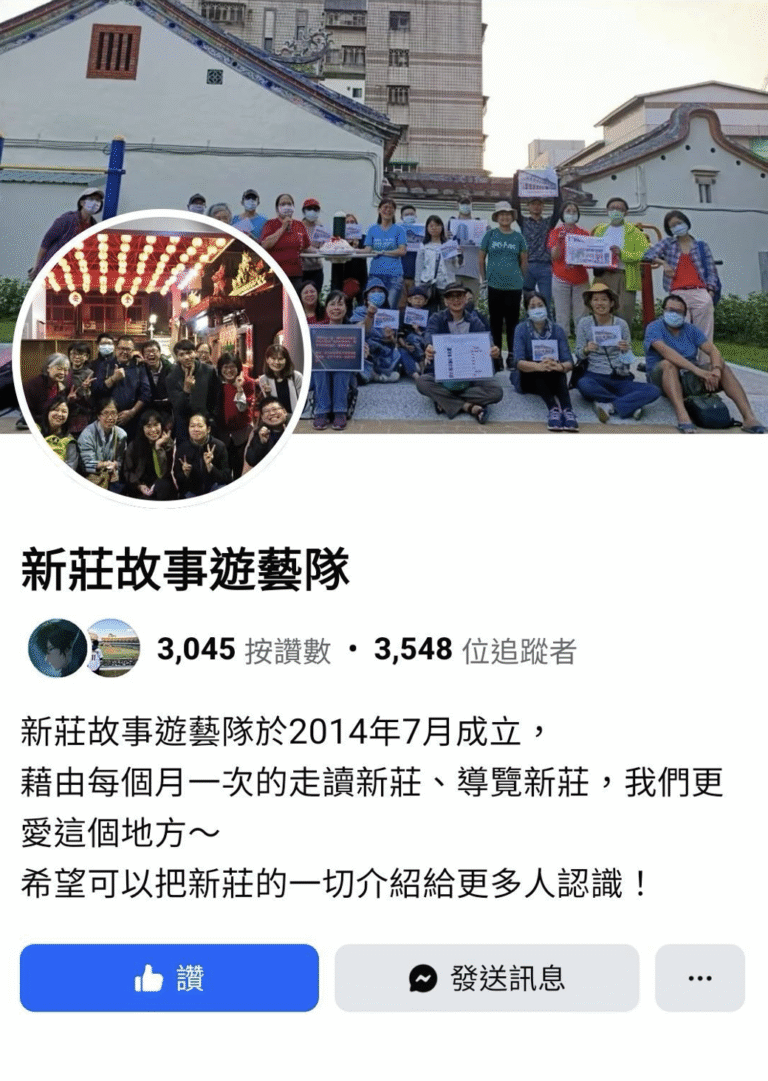
Their future goal is not expansion, but sustainable cultural transmission. They do not require every trainee to become a volunteer but hope to cultivate individuals who can share the stories of their hometown or surroundings. Even if they don’t stay with the team, they can still carry forward cultural memory. This small but solid effort represents their best response to practical limitations.
Current Situation and Challenges
In recent years, Xinzhuang Historic Street has changed significantly. Urban renewal has led to the demolition of many old buildings, gradually erasing the area’s historical appearance. While this brings commercial opportunities, it also triggers concerns among residents about the conflict between cultural preservation and urban development.
The area has been zoned as a commercial district, allowing property owners to renovate freely if they meet regulations. However, rules requiring set-back construction and unrestricted facade design often result in new buildings clashing with traditional styles, diminishing the area’s cultural atmosphere. Furthermore, the population of traditional neighborhoods has declined. For instance, after many migrant workers left the area, foot traffic dropped sharply, forcing shops to either transform or relocate.
Nevertheless, some residents and volunteers continue efforts to preserve and convey the spirit of the old street through tours and oral history. They highlight the lifestyle of traditional shopkeepers—opening for a few hours a day and using traditional craftsmanship to make a living—as a relaxed and graceful way of life worth respecting.
Still, preserving culture is no easy task. Most buildings are privately owned, and if declared cultural heritage, owners would lose some control over renovations, creating real-life challenges. Finding a balance between preserving cultural imagery and respecting residents’ rights is a significant challenge.
In the future, cooperation between the government and local organizations might allow preservation of architectural elements within new designs, ensuring historical traces are not lost. Promoting local cultural awareness may also encourage more people to care and participate in preservation, offering Xinzhuang Historic Street a new future.
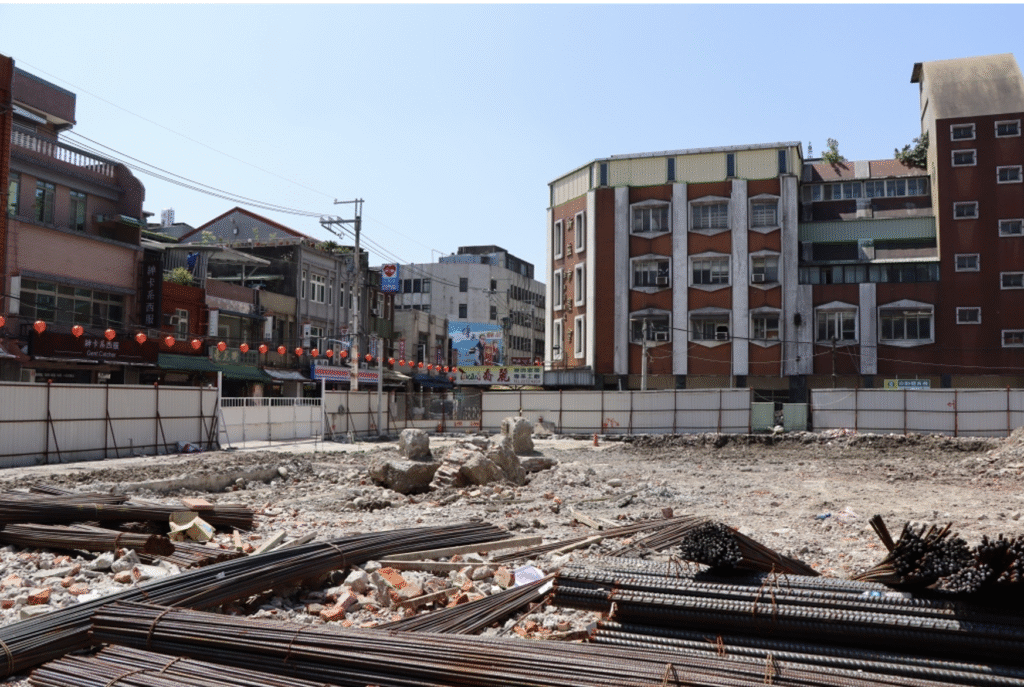
How Students Can Participate
At the end of the interview, they also discussed how students can get involved. They believe practicing how to introduce one’s environment is a great starting point—and can be fun. Although shyness or doubt may arise at first, they recalled having similar mixed feelings. Over time, they realized guiding others is not difficult. Some felt more nervous guiding people they knew, while others found it easier to speak to strangers. It varies by person, but the key is to take the first step.

